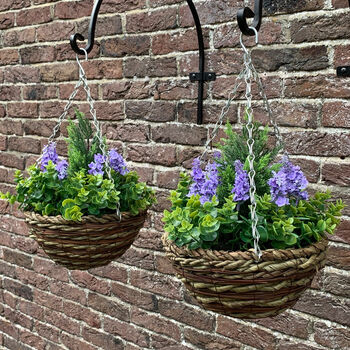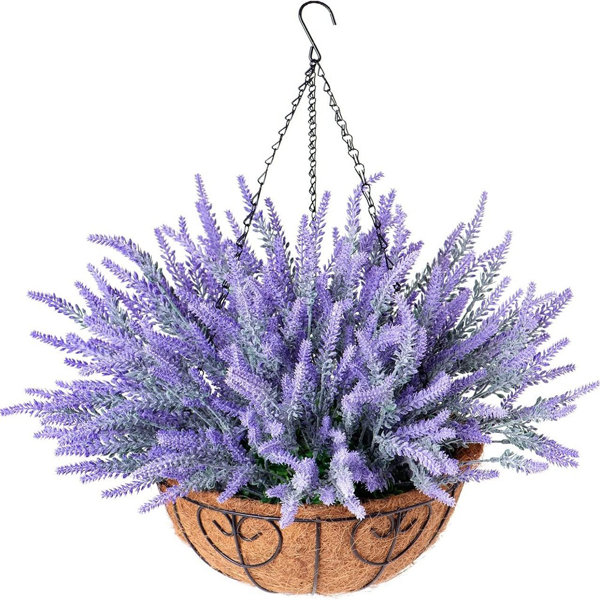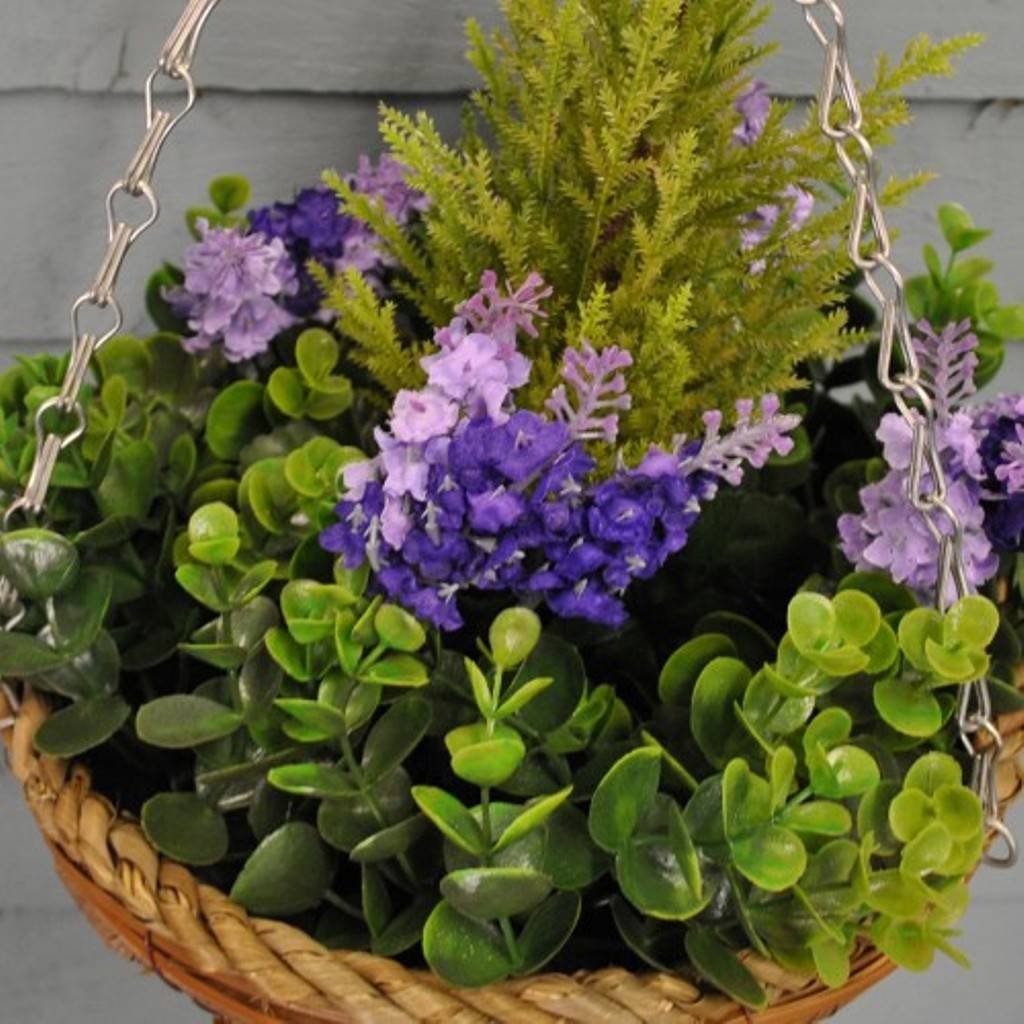Why Lavender Plants are Ideal for Hanging Baskets
Lavender plants are a popular choice for hanging baskets due to their low maintenance requirements, fragrant blooms, and ability to attract pollinators. One of the primary benefits of using lavender plants in hanging baskets is their ability to thrive in well-draining soil and full sun, making them perfect for balconies and patios. Additionally, lavender plants are relatively small in size, making them an excellent choice for hanging baskets where space may be limited.
Another advantage of using lavender plants in hanging baskets is their ability to attract pollinators such as bees and butterflies. The fragrant blooms of lavender plants are a rich source of nectar, making them a popular choice for gardeners looking to attract wildlife to their outdoor spaces. Furthermore, lavender plants are also known to repel pests such as mosquitoes and moths, making them a great choice for hanging baskets near outdoor seating areas.
In terms of maintenance, lavender plants are relatively easy to care for. They require minimal watering and can thrive in poor soil, making them an excellent choice for gardeners who are new to using hanging baskets. Additionally, lavender plants can be pruned back after blooming to encourage new growth and prevent the plant from becoming leggy.
Overall, lavender plants are an excellent choice for hanging baskets due to their low maintenance requirements, fragrant blooms, and ability to attract pollinators. Whether you’re a seasoned gardener or just starting out, lavender plants are a great choice for adding some beauty and fragrance to your outdoor space.
How to Select the Best Lavender Varieties for Your Hanging Baskets
When selecting lavender varieties for hanging baskets, there are several factors to consider. Climate, soil type, and desired bloom color are all important considerations to ensure that your lavender plants thrive. For example, if you live in a hot and dry climate, you may want to choose a variety that is more drought-tolerant, such as ‘Hidcote’ or ‘Munstead’. On the other hand, if you live in a cooler and more humid climate, you may want to choose a variety that is more resistant to moisture, such as ‘Grosso’ or ‘Phenomenal’.
Soil type is also an important consideration when selecting lavender varieties for hanging baskets. Lavender plants prefer well-draining soil, so if your hanging baskets have poor drainage, you may want to choose a variety that is more tolerant of wet soil, such as ‘Lavandin’ or ‘Sweet Romance’. Additionally, if you want to add some color to your hanging baskets, you may want to choose a variety that has a different bloom color, such as ‘Royal Purple’ or ‘Lavender Lady’.
Another factor to consider when selecting lavender varieties for hanging baskets is the size of the plant. If you have small hanging baskets, you may want to choose a compact variety, such as ‘Mini Blue’ or ‘Dwarf White’. On the other hand, if you have larger hanging baskets, you may want to choose a variety that is more vigorous, such as ‘Grosso’ or ‘Phenomenal’.
By considering these factors, you can choose the best lavender varieties for your hanging baskets and enjoy beautiful blooms all season long. Whether you’re a seasoned gardener or just starting out, selecting the right lavender variety can make all the difference in the success of your hanging baskets.
Top Lavender Varieties for Hanging Baskets: A Review of Popular Options
When it comes to choosing the right lavender variety for your hanging baskets, there are several popular options to consider. ‘Hidcote’, ‘Munstead’, and ‘Grosso’ are three of the most popular lavender varieties for hanging baskets, and for good reason. Each of these varieties has its own unique characteristics and growing conditions that make them well-suited for hanging baskets.
‘Hidcote’ is a compact, English lavender variety that is perfect for small hanging baskets. It produces pale purple flowers and has a sweet, floral fragrance. ‘Hidcote’ is also relatively low-maintenance and can thrive in poor soil, making it a great choice for gardeners who are new to growing lavender.
‘Munstead’ is another popular English lavender variety that is well-suited for hanging baskets. It produces bright purple flowers and has a slightly sweeter fragrance than ‘Hidcote’. ‘Munstead’ is also a bit more vigorous than ‘Hidcote’, making it a great choice for larger hanging baskets.
‘Grosso’ is a French lavender variety that is known for its large, fragrant flowers and silvery-gray foliage. It is a bit more finicky than ‘Hidcote’ and ‘Munstead’, but the payoff is well worth the extra effort. ‘Grosso’ is a great choice for gardeners who want to add a bit of drama and flair to their hanging baskets.
These are just a few examples of the many lavender varieties that are well-suited for hanging baskets. By choosing the right variety for your climate, soil type, and desired bloom color, you can create a beautiful and fragrant display that will attract pollinators and add beauty to your balcony or patio.
Creating a Thriving Environment for Your Lavender Hanging Baskets
To create a thriving environment for your lavender hanging baskets, it’s essential to provide the right conditions for growth. One of the most critical factors is soil quality. Lavender plants prefer well-draining soil that is rich in organic matter. A mix of potting soil, perlite, and vermiculite will provide the necessary drainage and aeration for healthy root growth.
Watering is also crucial for lavender hanging baskets. Lavender plants are drought-tolerant, but they still require regular watering to thrive. Water your lavender hanging baskets when the top inch of soil feels dry to the touch. Avoid overwatering, as this can lead to root rot and other problems.
Fertilization is another essential aspect of creating a thriving environment for your lavender hanging baskets. Feed your lavender plants with a balanced fertilizer during the growing season (spring and summer). A fertilizer with a ratio of 10-10-10 (nitrogen-phosphorus-potassium) will provide the necessary nutrients for healthy growth.
In addition to soil, watering, and fertilization, lavender hanging baskets also require adequate sunlight. Lavender plants prefer full sun to partial shade, so choose a location that receives at least 4-6 hours of direct sunlight per day.
Finally, consider the temperature requirements for your lavender hanging baskets. Lavender plants prefer cooler temperatures, between 65-75°F (18-24°C), during the day and around 55-65°F (13-18°C) at night. Avoid placing your lavender hanging baskets in areas with extreme temperatures or drafts.
By providing the right conditions for growth, you can create a thriving environment for your lavender hanging baskets. With proper care and attention, your lavender plants will flourish, and you’ll enjoy beautiful blooms and a fragrant scent all season long.
How to Care for Your Lavender Hanging Baskets: Tips for Pruning and Propagation
To keep your lavender hanging baskets looking their best, regular pruning and propagation are essential. Pruning helps to maintain the shape and size of the plant, promotes healthy growth, and encourages blooming. To prune your lavender hanging baskets, simply trim back the stems to about one-third of their length after blooming. This will help to encourage new growth and prevent the plant from becoming leggy.
In addition to pruning, propagation is also an important part of caring for your lavender hanging baskets. Lavender plants can be easily propagated through cuttings, division, or layering. To propagate through cuttings, simply take a 3-4 inch stem cutting from the tip of a healthy stem, remove the lower leaves, and plant it in a pot filled with well-draining soil. Keep the soil moist and warm until roots develop.
Division is another way to propagate lavender plants. To divide, simply dig up the entire plant, gently separate the roots, and replant the separated sections in a new pot filled with well-draining soil. Water well and keep the soil moist until the new plants are established.
Layering is a third method of propagation that involves bending a long stem down to the ground and securing it with a rock or a U-shaped wire. Cover the buried portion of the stem with soil and keep it moist until roots develop. Once roots have developed, cut the stem below the soil line and plant the new rooted section in a new pot.
Common pests and diseases to watch out for when growing lavender in hanging baskets include aphids, whiteflies, and root rot. To prevent these problems, make sure to provide good air circulation, water carefully, and fertilize regularly. If you do encounter any problems, treat them promptly with insecticidal soap or fungicides.
By following these tips for pruning and propagation, you can keep your lavender hanging baskets looking their best and enjoy beautiful blooms all season long.
Designing a Stunning Lavender Hanging Basket Display
When it comes to designing a beautiful lavender hanging basket display, the possibilities are endless. One way to create a stunning display is to combine lavender with other plants that complement its purple hue. Some popular options include rosemary, thyme, and chamomile, which all have a similar Mediterranean feel to lavender.
Another way to add visual interest to your lavender hanging basket display is to incorporate decorative elements. Consider adding a few sprigs of fresh rosemary or a small bunch of dried lavender to the basket for a pop of color and fragrance. You could also add a few small decorative stones or pebbles to the basket to add texture and interest.
If you want to create a more dramatic display, consider using multiple hanging baskets in different sizes and shapes. You could hang a large basket in the center and surround it with smaller baskets, or create a tiered display with baskets of different sizes. This will add visual interest and create a beautiful focal point for your balcony or patio.
Lighting can also play a big role in creating a stunning lavender hanging basket display. Consider adding some string lights or fairy lights to the basket to create a warm and inviting glow. This will not only highlight the beauty of the lavender, but also create a cozy and relaxing atmosphere.
Finally, don’t forget to consider the overall theme and style of your balcony or patio when designing your lavender hanging basket display. If you have a modern and sleek space, you may want to opt for a more minimalist design. If you have a more rustic or vintage space, you may want to add more decorative elements and textures to create a cozy and inviting atmosphere.
By following these tips and ideas, you can create a stunning lavender hanging basket display that will add beauty and fragrance to your balcony or patio. Whether you’re looking to create a simple and elegant display or a more dramatic and eye-catching one, there are endless possibilities to explore.
Common Mistakes to Avoid When Growing Lavender in Hanging Baskets
While growing lavender in hanging baskets can be a rewarding experience, there are several common mistakes to avoid. One of the most common mistakes is overwatering, which can lead to root rot and other problems. Lavender plants prefer well-draining soil and should be watered sparingly, especially in the winter months.
Underwatering is another common mistake to avoid. While lavender plants are drought-tolerant, they still require regular watering to thrive. Make sure to check the soil regularly and water when the top inch of soil feels dry to the touch.
Inadequate sunlight is another mistake to avoid. Lavender plants require full sun to partial shade, so make sure to place your hanging baskets in a location that receives at least 4-6 hours of direct sunlight per day.
Not pruning your lavender plants regularly is another mistake to avoid. Pruning helps to maintain the shape and size of the plant, promotes healthy growth, and encourages blooming. Make sure to prune your lavender plants regularly to keep them looking their best.
Not fertilizing your lavender plants regularly is another mistake to avoid. Lavender plants require regular fertilization to thrive, especially in the spring and summer months. Make sure to use a balanced fertilizer and follow the instructions on the label.
Finally, not monitoring for pests and diseases is another mistake to avoid. Lavender plants are susceptible to pests and diseases such as aphids, whiteflies, and root rot. Make sure to monitor your plants regularly and take action if you notice any problems.
By avoiding these common mistakes, you can ensure that your lavender plants thrive in their hanging baskets and provide you with beautiful blooms and a fragrant scent all season long.
Conclusion: Bringing the Beauty of Lavender to Your Balcony with Hanging Baskets
Lavender plants are a beautiful and low-maintenance addition to any balcony or patio. With their fragrant blooms and ability to attract pollinators, they are a great choice for gardeners of all skill levels. By following the tips and advice outlined in this article, you can create a stunning lavender hanging basket display that will bring beauty and joy to your outdoor space.
Remember to choose the right lavender variety for your climate and desired bloom color, and to provide the right growing conditions for your plants. With proper care and attention, your lavender hanging baskets will thrive and provide you with beautiful blooms all season long.
Whether you’re a seasoned gardener or just starting out, growing lavender in hanging baskets is a great way to add some beauty and fragrance to your outdoor space. So why not give it a try? With a little creativity and some basic gardening knowledge, you can create a stunning lavender hanging basket display that will be the envy of all your friends and neighbors.
By incorporating lavender plants into your hanging baskets, you can create a beautiful and fragrant display that will attract pollinators and add beauty to your outdoor space. So don’t wait – start planning your lavender hanging basket display today and enjoy the beauty and benefits of these lovely plants all season long.







